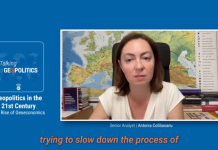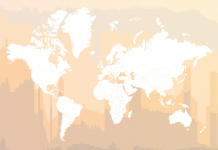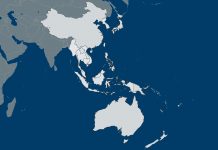About a year after the COVID-19 pandemic introduced its new rules of survival, my wife and I risked life and limb for the chance to travel. Having made reservations on an airline now shrunken and a hotel normally inaccessible at the time of year, we went to the airport, where as always we were asked if our bags had been in our possession at all times. Our carry-ons were X-rayed as always, and I was asked to remove my belt for visual inspection. Everyone has been doing this since 9/11, and most of us are past the point of noticing how unseemly the pat-down process is. I also wore a mask and was asked to keep my distance from others going through the process. In 2001, I was forbidden to travel with a knife, today with a fever. After 9/11, we looked with suspicion at others, wondering if they carried the instruments of our death. Today we look at our fellow passengers and wonder similarly.
Both crises carried the risk of death, albeit without an obvious solution, and we were forced to jury rig solutions on a global basis. I have gone through security at airports from Singapore to Frankfurt, that is until the pandemic created a problem that could not be X-rayed. 9/11 ushered in an era of threat that was seen as global, so the solution was global. Security check lines, conveyor belts and X-rays would make us safe from a global and invisible menace. Reasonable people bored in line could fantasize about ways to get around the x-ray and down a plane. The safety measures were necessary, and though they were imperfect, they worked. Or perhaps the destruction of al-Qaida and the Islamic State was the real solution. Or maybe they ran out of people capable of learning to fly a plane and willing to die for their beliefs.
Whatever the cause, the security protocols stayed in place for a generation, with social distancing now added for good measure. That these measures remain is not unreasonable. That there hasn’t been another hijacking the likes of 9/11 does not mean that it can’t happen again. Dismantling a security system that seems to have worked would be irresponsible. What is allowing a stranger to open your carry-on compared to death?
A similar thing happened in World War II. Before the war, security had been more lax in the U.S. military. Stages of security checks were conducted on people with access to sensitive information. It worked, but as with most things it was flawed, and the Soviets, not our enemies at the time, penetrated the atomic program. The need for security after the war was therefore not unreasonable, and what emerged was a complex network of intelligence agencies, all vigorously performing background checks for signs of duplicity. The social cost of mistrust is high, yet the cost of not being suspicious is also high.
Which brings us to COVID-19, the rules of which state that anyone might be dangerous. Yet the perfect application of the solution by everyone – the only real solution – simply won’t happen. The fact that it won’t happen, though, doesn’t change the fact that it is the best solution available. I have read articles saying that even after we are all vaccinated, we will still be expected to wear masks and maintain social distancing – not unreasonable if your goal is to minimize risks at all costs. Vaccines aren’t flawless, so backing them up with another layer of imperfect protection will certainly limit the threat. I don’t know if the people who wrote the articles know what they are talking about, but it would follow the two examples I have used: In a wrenching crisis like World War II, 9/11 or a global pandemic, all measures, however extreme, are on the table.
The defenses created against an attack 20 years ago remain in place. The security measures necessitated by a war that broke out 80 years ago remain in place. (If anything, they have been enhanced.) Each of these was the best available practice at the time and reasonable given the circumstances. The dangers they were meant to guard against are still potential dangers. Abandoning a measure to protect us as well as possible against ongoing threats would seem reckless. From this it follows that the measures imposed by COVID-19 will remain as well. The cost of failure is too high.
Each set of measures had its cost, of course, high at the beginning and later routinized into our daily lives. The issue is not the economic cost alone; it’s the cost of pyramiding measures designed to protect us that make everyday life a little more difficult. The costs of some such as X-raying our bags are relatively low, although the potential attack on privacy is not trivial. The complexity of getting many significant federal jobs, and the associated intrusion on our private lives, makes sense, although the criteria imposed by the government is arcane at best. We can adjust to wearing masks, but creating a new normal in which everyone always wears them and stays six feet apart will be unwelcome for some and strange to most.
Emergency measures endure when the emergency does. 9/11 could happen again. Today’s rivalry between the U.S. and China had its roots in the Cold War, which in turn had its in World War II. We do not know what variants of COVID-19 or new viruses might emerge. Prudence recommends security in all these varied areas. But when we consider how each individual measure forced us to change some part of our lives, and we lay all the security protocols on the table together, then we see a collective force that is justified one at a time, if startling in total.
Yet, they will remain in place. And as I walk through airport security, wearing a mask and maintaining social distance, I wonder about the process that cleared TSA personnel for the task of enforcing anti-terrorism and anti-COVID-19 measures. Our expectations of safety can eventually overload the system, even as they earnestly seek to do good. An emergency measure that is interminable is better called a way of life.






 The Geopolitics of the American President
The Geopolitics of the American President